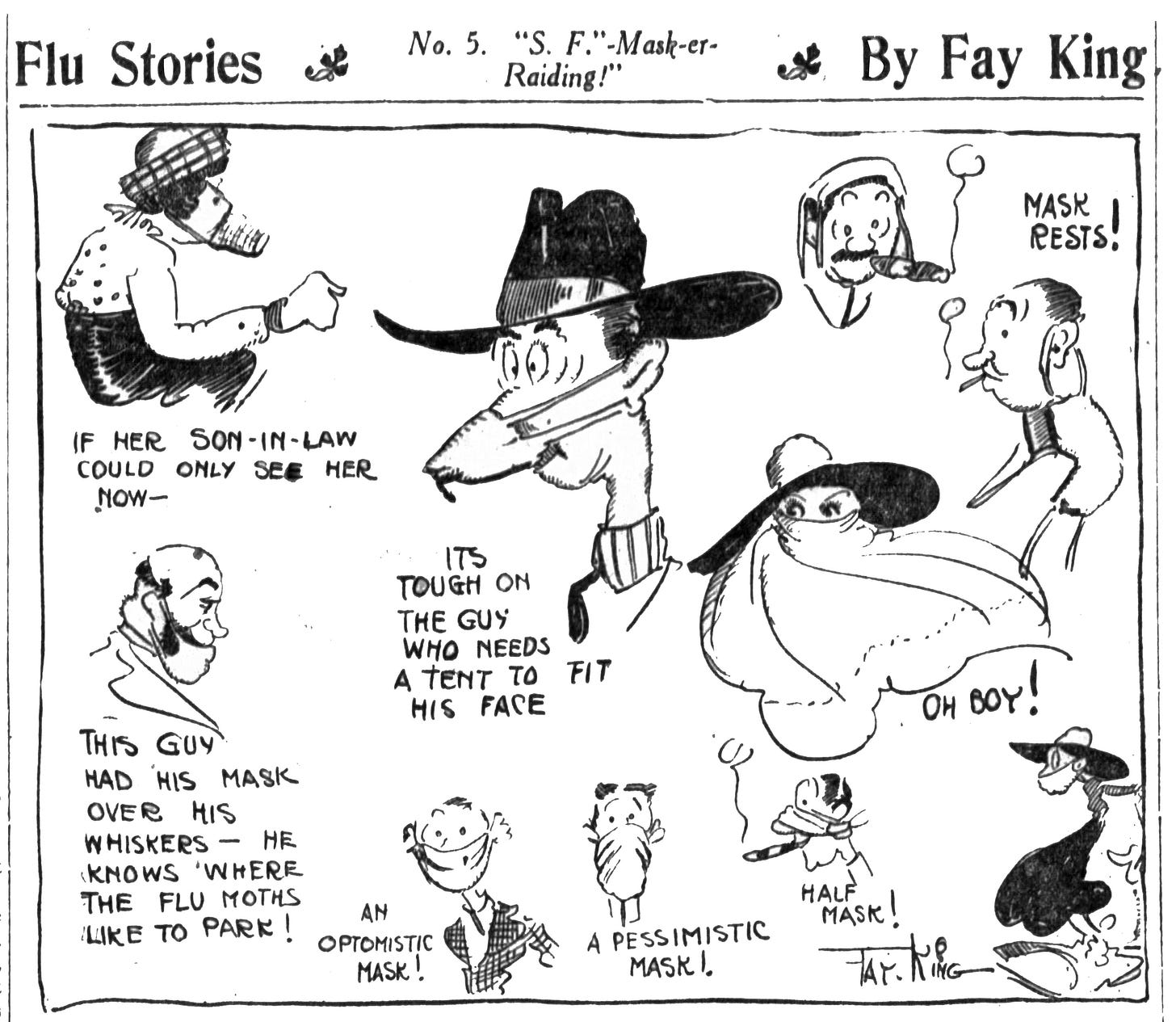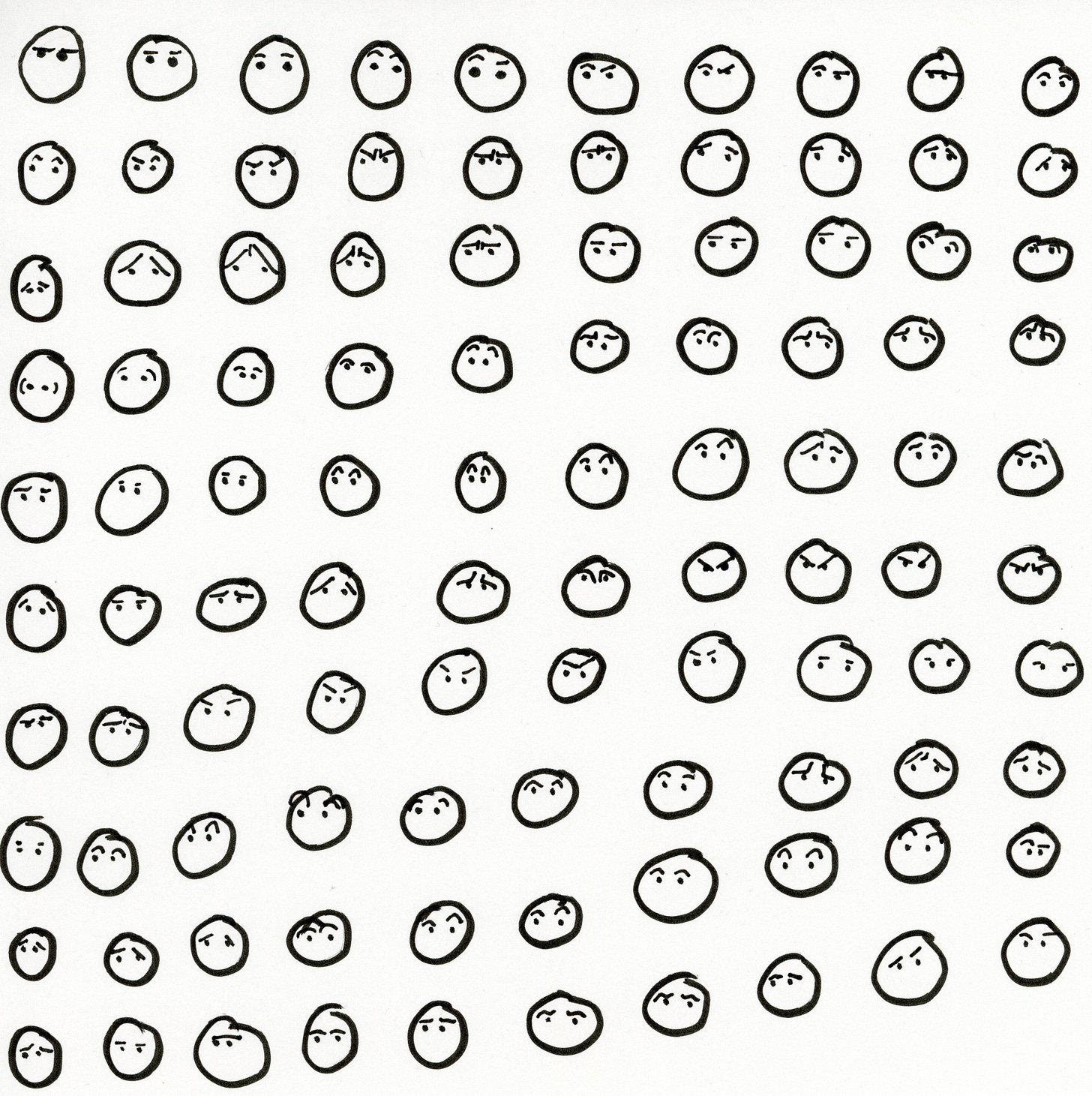In class this past semester, I had students read comics by early female cartoonists. One of these, Fay King (1889-unknown), stood out to the class because she used the events of the era in her strips—she had a series called “Flu Stories,” in which she depicted various reactions to the 1918 Flu pandemic. In one memorable cartoon, King draws different types of mask wearers. Apart from the depictions being very familiar to our masked lives, we also noted how powerful the space above the masks became in these stories. We enjoyed how King used hair, hats, eyes, and eyebrows to convey information about each character.
I was reminded of Ivan Brunetti’s eyebrow exercise, which Amaris and I adapted to use in our autobiographix class, and just how apt it has become in capturing these past, masked years. Amaris outlines the exercise below - give it a try and throw a few masks on while you’re at it (preferably N95s…)!

Although all of the faces above have the same simple circle for a head, dot for an eye, and dash of a nose, the angle, bend, and position of the eyebrow suggests an emotion—and an emotion suggests a story. In Cartooning Philosophy and Practice, Ivan Brunetti includes a quick exercise to practice storytelling through subtle shifts in eyebrows. Just draw a simple head in profile and add an eyebrow, drawing quickly, repeating the basic shapes. If one eyebrow seems to suggest another, draw in that direction, creating a sequence of emotions. Brunetti writes:
Note that minute shifts in the eyebrows, whether or not intentional, subtly alter the emotion expressed. More importantly, note that even without drawing one, a democratic grid is implied. It is the natural inclination of the mind to seek order and structure. Note also that a “story” is suggested. Here we are seeing the cartooning language in its simplest form: we are “reading” the pictures.
We adapted this exercise with students to focus on the communicative power of eyebrows—something even more important to think about now that everyone is wearing face masks to school and we must discern the whole range of human emotion from eyes and eyebrows alone. Luckily, eyebrows tell a story on their own.
Adapted Eyebrow Exercise
Draw ten circles in a row. Starting with the one in the top left, draw ten circles down. Fill in the rows and columns with circles so you have a grid of 100 circles—these are heads. Starting with the first one, give it two dots for eyes. Add two lines for eyebrows. Repeat, varying the tilt, squiggle, arch, etc. of the eyebrow lines. As Brunetti advises, “Try many different eyebrows. Let the previous eyebrow suggest the next one. Every so often, try again to draw a series of heads with the same eyebrow. Then go back to varying the eyebrows.” Go fast; don’t overthink it.
Once you have given each head eyes and eyebrows, pass it to your neighbor. Try to label the emotions of the sheet you receive. Which eyebrows are easy to identify? Which make labeling the emotion guesswork?
Links and Miscellany
Here’s more about Cartooning Philosophy and Practice by Ivan Brunetti.
There’s not much out there on Fay King, but the superlative chronicler of women cartoonists, Trina Robbins, covers King in Flapper Queens: Women Cartoonists of the Jazz Age.
We plan to highlight comic artists throughout history (like Fay King) this year—do you have any you’d like to see? Let us know!





